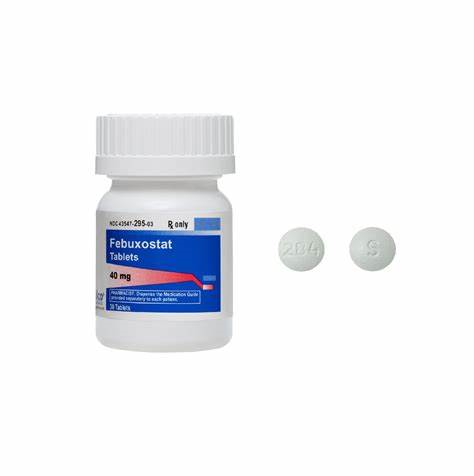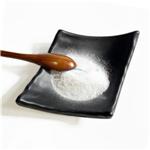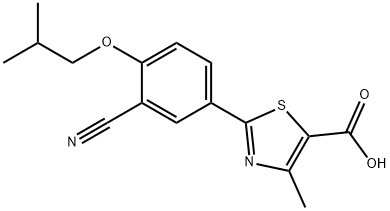Febuxostat: Application, Mechanism of Action and Side Effects
Mar 26,2024
Application of Febuxostat
Febuxostat is a medication used to manage and treat hyperuricaemia and gout. It is also a xanthine oxidase inhibitor. Because of the increased risk of cardiovascular death with febuxostat compared to allopurinol, the FDA recently recommended limiting the use of febuxostat to patients in whom allopurinol is ineffective or in whom allopurinol is associated with serious adverse effects.

Mechanism of Action
Febuxostat is a non-purine selective inhibitor of xanthine oxidase, an enzyme involved in purine catabolism. Xanthine oxidase catalyses two reactions that ultimately produce uric acid from hypoxanthine. Febuxostat selectively inhibits xanthine oxidase by forming stable complexes with the reduced and oxidised forms of the enzyme, thereby inhibiting its function. Hyperuricaemia is defined as a condition in which the serum concentration of uric acid exceeds the solubility of uric acid (approximately 7 mg/dL). Febuxostat is able to reduce serum uric acid levels in patients with hyperuricaemia after treatment. Moreover, its chemical structure is different from that of purines or pyrimidines, and it does not inhibit other enzymes in the nucleotide catabolic pathway.
How should Febuxostat be used?
Febuxostat is available in 40mg and 80mg tablets. Febuxostat is administered orally at an initial dose of 40 mg per day. clinicians may increase the dose of febuxostat to 80 mg per day in patients whose serum uric acid level does not fall below 6 mg/dL after two weeks of treatment with 40 mg. gouty flares may occur after initiation of febuxostat therapy. Therefore, prevention of flares with nonsteroidal anti-inflammatory drugs (NSAIDs) or colchicine is recommended in conjunction with febuxostat therapy and may continue for up to 6 months. The safety and efficacy of febuxostat in the paediatric age group has not been demonstrated. The American College of Rheumatology 2020 guidelines state that uric acid-lowering therapy (febuxostat/allopurinol) is conditionally recommended for patients with moderate to severe CKD (≥ stage 3), urolithiasis, or serum uric acid concentrations >9 mg/dl).
Side Effects
Common adverse reactions to Febuxostat include: abnormal liver function, dizziness, arthralgia, nausea, and rash.
Rare adverse reactions may include the following manifestations:
Blood and Lymphatic System: anemia, idiopathic thrombocytopenic purpura, leukocytosis/leukopenia, neutropenia, pancytopenia, splenomegaly, thrombocytopenia
Cardiac: angina pectoris, atrial fibrillation/flutter, cardiac murmur, EKG abnormal, palpitations, sinus bradycardia, tachycardia
Ear and Eye: deafness, tinnitus, vertigo, blurred vision
Gastrointestinal: abdominal distention, abdominal pain, constipation, dry mouth, dyspepsia, flatulence, frequent stools, gastritis, gastroesophageal reflux disease, gastrointestinal discomfort, gingival pain, haematemesis, hyperchlorhydria, hematochezia, mouth ulceration, pancreatitis, peptic ulcer, vomiting
Immune: hypersensitivity reactions
Infections: herpes zoster
Metabolism-related: anorexia, appetite decreased/increased, dehydration, diabetes mellitus, hypercholesterolemia, hyperglycemia, hyperlipidemia, hypertriglyceridemia, hypokalemia, weight decreased/increased
Musculoskeletal: arthritis, joint stiffness, joint swelling, muscle spasms, twitching, weakness, musculoskeletal pain/stiffness, myalgia
Nervous System: altered taste, balance disorder, cerebrovascular accident, Guillain-Barre syndrome, headache, hemiparesis, hypoesthesia, hyposmia, lacunar infarction, lethargy, mental impairment, migraine, paresthesia, somnolence, transient ischemic attack, tremor
Psychiatric: agitation, anxiety, depression, insomnia, irritability, decreased libido, nervousness, panic attack, personality change.
Renal: hematuria, nephrolithiasis, pollakiuria, proteinuria, renal failure, renal insufficiency, urgency, incontinence
Reproductive: breast pain, erectile dysfunction, gynecomastia
Respiratory: bronchitis, cough, dyspnea, epistaxis, nasal dryness, paranasal sinus hypersecretion, pharyngeal edema, respiratory tract congestion, sneezing, throat irritation, upper respiratory tract infection
Skin and Subcutaneous Tissue: alopecia, angioedema, dermatitis, dermographism, ecchymosis, eczema, hair color changes, hair growth abnormal, hyperhidrosis, peeling skin, petechiae, photosensitivity, pruritus, purpura, skin discoloration/altered pigmentation, skin lesion, skin odor abnormal, urticaria
- Vascular: flushing, hot flush, hypertension, hypotension
- Related articles
- Related Qustion
Pal-Tripeptide-1 enhances collagen, skin elasticity, and reduces wrinkles effectively, with superior antioxidant properties, making it a key anti-aging skincare ingredient.....
Nov 13,2024APICombining fludarabine, cyclophosphamide, and rituximab (FCR) is a widely used CIT regimen for CLL....
Mar 26,2024APIFebuxostat
144060-53-7You may like
- Febuxostat
-

- $0.00 / 25Kg/Bag
- 2024-11-14
- CAS:144060-53-7
- Min. Order: 2Kg/Bag
- Purity: 99% up, High Density
- Supply Ability: 20 tons
- Febuxostat
-

- $32.00 / 5mg
- 2024-11-14
- CAS:144060-53-7
- Min. Order:
- Purity: 100%
- Supply Ability: 10g
- Febuxostat
-

- $6.00 / 1kg
- 2024-11-14
- CAS:144060-53-7
- Min. Order: 1kg
- Purity: 95%
- Supply Ability: 1000kg






